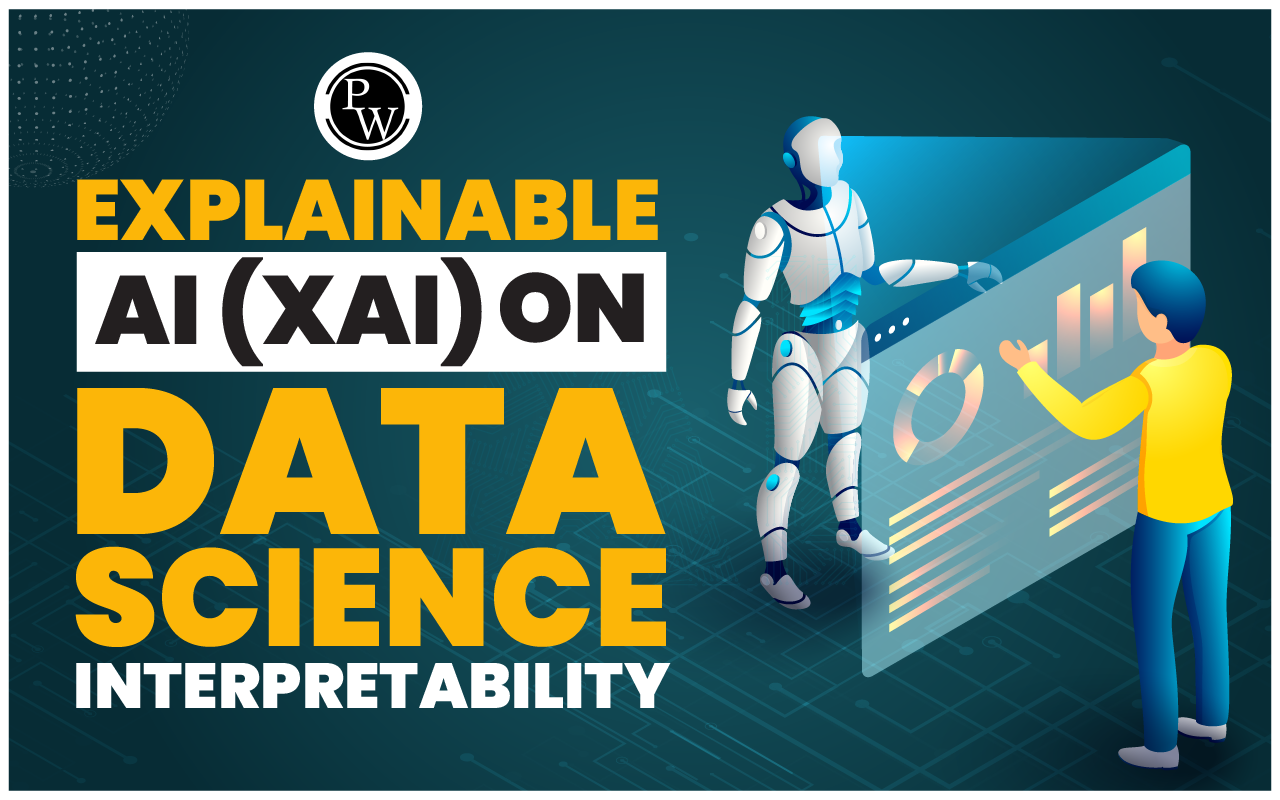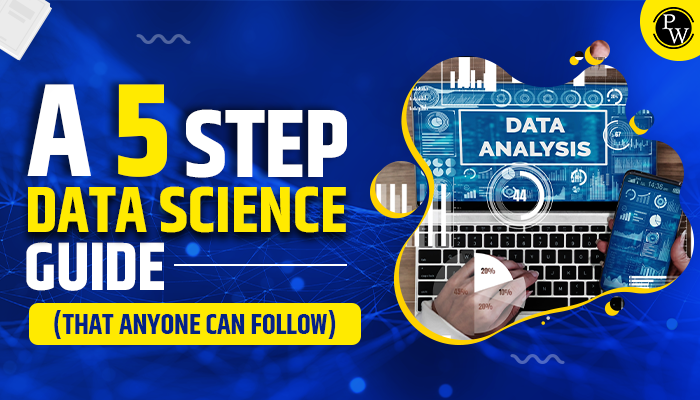Explainable AI (XAI) refers to the set of processes and methods designed to make the outputs and decisions of artificial intelligence (AI) models understandable and interpretable by humans. The goal is to provide insights into how AI models reach specific outcomes, ensuring transparency, trust, and accountability in AI systems.
Explainable AI: Do you ever feel like data science is a mysterious black box, and it’s hard to understand why it spits out the answers it does? Well, we have some good news for you – there is something called explainable AI (XAI) that can help make data science interpretability much easier. XAI provides insights into how decisions are made by algorithms used in data science so that they become more transparent and understandable for all.
As our journey into Data Science continues, we must remain considerate of our machine learning practices and find ways to become more transparent in our information-gathering and predictive analysis processes. Decode Data Science With Machine Learning 1.0 by Physics Wallah can help you reach new heights with data science interpretability – check it out today!
In this blog post, we’ll uncover what Explainable AI is and how it has already been used to transform our understanding of machine learning models on an unprecedented level. Even if you aren’t familiar with the technical aspects of artificial intelligence or machine learning, we will cover what you need to know about XAI to stay up-to-date on this important topic.
Explainable AI On Data Science Overview

The importance of Explainable AI becomes evident in scenarios where human lives or significant resources are at stake. For instance, in healthcare, an AI model diagnosing a medical condition should be able to provide doctors and patients with understandable justifications for its predictions.
Similarly, in finance, where automated systems make decisions on investments or loans, stakeholders need to comprehend the factors influencing those decisions. As organizations increasingly integrate AI into decision-making processes, understanding, validating, and challenging AI decisions becomes paramount. In data science, Explainable AI thus emerges as a key paradigm to bridge the gap between the technical complexity of machine learning models and the need for transparency and comprehension in their application.
Also Read: Top 10 Artificial Intelligence Trends in 2023
What is Explainable AI?
Explainable artificial intelligence (XAI) refers to a set of processes and methods designed to enable human users to comprehend and trust the outcomes produced by machine learning algorithms.
Explainable AI describes an AI model, detailing its anticipated impact and identifying potential biases. It plays a crucial role in characterizing model accuracy, fairness, transparency, and overall outcomes in the decision-making processes powered by AI.
The importance of Explainable AI lies in building trust and confidence within an organization when deploying AI models into practical use. Additionally, it supports the adoption of a responsible approach to AI development.
- As AI technologies advance, the challenge arises in understanding and retracing how algorithms reach specific results.
- Often, these calculation processes transform into what is commonly known as “black box” models, making it challenging for humans, including the engineers and data scientists who create the algorithm, to interpret or explain the internal workings leading to a particular result.
- Understanding how an AI-enabled system arrives at a specific output offers several advantages. Explainability helps developers ensure that the system functions as intended, aligns with regulatory standards, and allows those impacted by a decision to question or alter the outcome.
As organizations aim to build responsible AI at scale, integrating Explainable AI becomes critical in fostering transparency and accountability in AI development and deployment.
Why Explainable AI Matters?
Explainable AI (XAI) holds significant importance for several reasons:
1. Transparency and Trust:
- Building Trust: Understanding how AI models reach decisions fosters trust among users and stakeholders. Transparent AI systems are more likely to be accepted and embraced by individuals and organizations.
- User Confidence: Users, including end-users and decision-makers, are more likely to have confidence in AI-generated results when they can comprehend the rationale behind the decisions.
2. Ethical Considerations:
- Avoiding Bias: Explainability is crucial in identifying and addressing biases within AI models. It allows for a thorough examination of how data is used and helps prevent unintended discrimination or unfair treatment.
- Ethical Decision-Making: Knowing how AI reaches conclusions enables organizations to ensure that the decisions align with ethical guidelines and principles.
3. Regulatory Compliance:
- Meeting Standards: Many industries and regions have regulatory standards that require transparency and accountability in decision-making processes. Explainable AI is essential for meeting these compliance standards.
4. Debugging and Improvement:
- Identifying Errors: When AI systems produce unexpected or incorrect results, explainability helps identify errors or issues in the model. This aids in debugging and improving the overall performance of the AI system.
5. Human Understanding:
- Facilitating Communication: Explainable AI makes communicating with non-technical stakeholders easier for data scientists and AI developers. It bridges the gap between technical complexities and a more intuitive understanding for a broader audience.
6. Legal and Regulatory Compliance:
- Legal Scrutiny: In cases of legal scrutiny or challenges, having an explainable AI system allows organizations to justify decisions, reducing legal risks associated with AI applications.
7. Insight Generation:
- Insightful Analysis: Understanding the decision-making process of AI models can provide valuable insights into data patterns, correlations, and influential factors. This insight can be leveraged for strategic decision-making.
8. User Empowerment:
- Informed Choices: In scenarios where AI impacts end-users directly (e.g., personalized recommendations), explainability empowers users by providing information about how recommendations or decisions are made.
In essence, explainable AI matters because it addresses issues related to transparency, accountability, ethical considerations, regulatory compliance, and user understanding, contributing to the responsible development and deployment of artificial intelligence.
Explainable AI Examples
Let’s take an example using the LIME (Local Interpretable Model-agnostic Explanations) library in Python to make an image classification model explainable. In this example, we’ll use a pre-trained image classification model (e.g., a deep neural network) and LIME to explain its predictions.
# Install necessary libraries
!pip install lime
!pip install tensorflow
!pip install matplotlib
import lime
from lime import lime_image
from skimage.segmentation import mark_boundaries
from tensorflow.keras.applications.inception_v3 import InceptionV3
from tensorflow.keras.applications.inception_v3 import preprocess_input, decode_predictions
from tensorflow.keras.preprocessing import image
import matplotlib.pyplot as plt
import numpy as np
# Load the pre-trained InceptionV3 model
model = InceptionV3()
# Define a function to preprocess the image for the model
def preprocess_image(image_path):
img = image.load_img(image_path, target_size=(299, 299))
img_array = image.img_to_array(img)
img_array = np.expand_dims(img_array, axis=0)
img_array = preprocess_input(img_array)
return img_array
# Load and preprocess an example image
image_path = ‘path/to/your/image.jpg’
processed_image = preprocess_image(image_path)
# Make a prediction using the pre-trained model
predictions = model.predict(processed_image)
decoded_predictions = decode_predictions(predictions, top=3)[0]
print(“Top predictions:”)
for i, (imagenet_id, label, score) in enumerate(decoded_predictions):
print(f”{i + 1}: {label} ({score:.2f})”)
# Use LIME to explain the model predictions
explainer = lime_image.LimeImageExplainer()
explanation = explainer.explain_instance(processed_image[0], model.predict, top_labels=5, hide_color=0)
# Display the original image
plt.imshow(image.load_img(image_path))
plt.title(“Original Image”)
plt.show()
# Display the LIME explanation
temp, mask = explanation.get_image_and_mask(explanation.top_labels[0], positive_only=True, num_features=5, hide_rest=True)
plt.imshow(mark_boundaries(temp / 2 + 0.5, mask))
plt.title(“LIME Explanation”)
plt.show()
In this example, we used a pre-trained InceptionV3 model for image classification and an example image. The LIME library is used to generate an explanation for the model’s prediction. The explanation highlights the most important regions of the image that contributed to the model’s decision.
Note: Ensure you have the necessary images and adjust the file paths accordingly. This example assumes you have a pre-trained InceptionV3 model available.
Explainable AI Towards Data Science
Explainable AI (XAI) is a critical aspect of artificial intelligence that focuses on making the decision-making process of AI models understandable and interpretable by humans. This transparency is essential for building trust, addressing ethical concerns, and ensuring accountability in AI applications. Here’s a breakdown of Explainable AI in the context of Towards Data Science, along with an example:
1. Model Transparency:
- Definition: Explainable AI aims to reveal the inner workings of complex machine learning models, making them transparent and interpretable.
- Example: A machine learning model is trained to predict credit approval. Using Explainable AI techniques, such as feature importance analysis, stakeholders can understand which factors (e.g., income, credit score) the model considers most influential in its decisions.
2. Importance of Explainability:
- Why It Matters: In scenarios where AI impacts individuals’ lives, such as healthcare or finance, knowing how and why a decision is made becomes crucial for user acceptance and regulatory compliance.
- Example: A medical diagnosis model that uses Explainable AI helps doctors understand the features or symptoms contributing to a specific diagnosis, enabling them to validate and trust the model’s recommendations.
3. Addressing Bias and Fairness:
- Challenge: AI models may inadvertently learn biases from training data, leading to unfair or discriminatory outcomes.
- Example: An AI-driven hiring tool might inadvertently favor specific demographics. Explainable AI allows stakeholders to audit the model, identify biased features, and address them to ensure fair decision-making.
4. Techniques for Explainability:
- Methods: Various techniques, such as feature importance, SHAP (Shapley Additive explanations), LIME (Local Interpretable Model-agnostic Explanations), and decision trees, contribute to model explainability.
- Example: Using SHAP values, analysts can quantify the impact of each feature on a model’s prediction. This helps in understanding the contribution of individual components in a particular prediction.
5. Interpretable Machine Learning Models:
- Approach: Choosing inherently interpretable models, like decision trees or linear regression, enhances explainability.
- Example: In fraud detection, an interpretable decision tree model can clearly illustrate the criteria (e.g., transaction amount, location) that contribute to classifying a transaction as fraudulent.
6. User-Friendly Explanations:
- Communication: Explainable AI should present insights in a user-friendly manner that non-experts understand.
- Example: An AI-driven chatbot that uses natural language explanations to describe its responses, making it more accessible to users who may not have technical expertise.
7. Real-time Interpretability:
- Requirement: Some applications require real-time explanations for immediate decision justifications.
- Example: In autonomous vehicles, real-time explanations about why the AI system made a specific driving decision (e.g., stopping at an intersection) enhance safety and user confidence.
In summary, Explainable AI in Data Science involves:
- Making complex AI models interpretable.
- Addressing biases.
- Using various techniques for explainability.
- Favoring interpretable models.
- Providing user-friendly explanations.
These practices contribute to AI’s responsible and ethical deployment in diverse applications. There is an immense amount of knowledge out there about this subject, but the only way to fully harness those skills is through action. That’s why we highly recommend enrolling in Full Stack Data Science Pro by Physics Wallah, the best data science course available online today. This course will teach you everything you need to know about interpretability, XAI, data analysis, and more.
Must Read: Data Science vs Machine Learning and Artificial Intelligence
Explainability AI in Machine Learning
Explainability in AI, often referred to as Explainable AI (XAI), is crucial in machine learning to make the decision-making process of models transparent and understandable. Explainability in machine learning is particularly important when dealing with complex models that might otherwise be viewed as “black boxes.”
Importance of Explainability in Machine Learning
- Significance: In scenarios where machine learning models impact critical decisions, such as healthcare, finance, or criminal justice, knowing why a model makes a specific prediction is essential for user trust, regulatory compliance, and ethical considerations.
Techniques for Achieving Explainability
- Feature Importance: Identifying which features (input variables) have the most significant impact on model predictions.
- SHAP (Shapley Additive exPlanations): Assigning a value to each feature to explain its contribution to a specific prediction.
- LIME (Local Interpretable Model-agnostic Explanations): Generating locally faithful explanations for model predictions.
Example of Explainability AI in Machine Learning
- Scenario: Consider a machine learning model used for credit scoring in a financial institution. The model predicts whether an applicant will likely default on a loan based on various features such as income, credit history, and debt-to-income ratio.
- Explainability Techniques:
- Feature Importance: After training the model, a feature importance analysis reveals that credit history and debt-to-income ratio are the most influential factors in predicting loan default.
- SHAP Values: Using SHAP values, the model’s output for a specific applicant is explained by quantifying the impact of each feature. For instance, it shows that the applicant’s low credit score significantly contributes to the model’s prediction of high default risk.
- LIME Explanation: LIME provides a local interpretation for a specific prediction, explaining why the model made a particular decision for a given applicant. It might highlight that, despite a low credit score, the applicant’s stable income and employment history mitigate the default risk.
If you’re interested in leveraging Machine Learning and idea interpretability, Decode Data Science With Machine Learning 1.0 by Physics Wallah is an excellent course that helps you to begin your journey towards becoming a Data Scientist. With right guidance and effort, everything is possible!
Explainable AI With Python
Explainable AI (XAI) in Python involves using tools and libraries to make machine learning models more interpretable. There are several techniques and libraries available in Python to achieve explainability. Here’s a brief overview:
1. LIME (Local Interpretable Model-agnostic Explanations):
- Description: LIME is a popular Python library for model-agnostic interpretability. It explains the predictions of black-box models by approximating their behavior with a local interpretable model.
- Example Usage:
from lime import lime_tabular, lime_image
explainer = lime_tabular.LimeTabularExplainer(training_data, mode=”classification”)
explanation = explainer.explain_instance(test_data, model.predict_proba)
2. SHAP (Shapley Additive exPlanations):
- Description: SHAP values provide a unified measure of feature importance based on cooperative game theory. The SHAP library in Python helps explain machine learning models’ output.
- Example Usage:
import shap
explainer = shap.Explainer(model)
shap_values = explainer.shap_values(test_data)
shap.summary_plot(shap_values, test_data)
3. ELI5:
- Description: ELI5 is a Python library that provides tools for debugging machine-learning models and making them more interpretable.
- Example Usage:
import eli5
eli5.show_weights(model)
4. InterpretML:
- Description: InterpretML is a Python library that offers an integrated set of explainability tools. It includes various techniques such as SHAP, LIME, and more.
- Example Usage:
from interpret import show
from interpret.data import ClassHistogram
from interpret.glassbox import ExplainableBoostingClassifier
# Train Explainable Boosting Classifier
ebm = ExplainableBoostingClassifier()
ebm.fit(X_train, y_train)
# Visualize global and local explanations
show(ebm.explain_global())
show(ebm.explain_local(X_test[:5], y_test[:5]))
5. Yellowbrick:
- Description: Yellowbrick is a visualization library that integrates with scikit-learn. It includes visualizations for model evaluation and interpretation.
- Example Usage:
from yellowbrick.model_selection import FeatureImportances
viz = FeatureImportances(model)
viz.fit(X, y)
viz.show()
6. AIX360 (IBM AI Explainability 360):
- Description: AIX360 is a toolkit developed by IBM for explainable AI. It includes multiple algorithms and tools for model explainability.
Example Usage:
from aix360.algorithms.shap import KernelExplainer
explainer = KernelExplainer(model)
shap_values = explainer.shap_values(test_data)
Installing these libraries may require using a package manager like pip (pip install library_name).
Explainable AI Techniques
Explainable AI (XAI) encompasses various techniques to make the decision-making process of machine learning models more transparent and interpretable. Here are some key techniques:
1) Feature Importance:
- Description: Analyzing the importance of features in a model helps understand which variables contribute the most to predictions.
- Technique: Methods like permutation importance or tree-based models provide insights into the significance of each feature.
2) Local Interpretable Model-agnostic Explanations (LIME):
- Description: LIME creates locally faithful explanations for individual predictions, generating understandable models that approximate the behavior of the complex model.
- Technique: It perturbs the input data, observes the model’s prediction changes, and fits an interpretable model to the perturbed data.
3) SHapley Additive exPlanations (SHAP):
- Description: SHAP values allocate the contribution of each feature to the prediction in a fair and consistent way, offering a game-theoretic approach to feature importance.
- Technique: It calculates the average contribution of each feature across all possible combinations, considering all possible orders of feature attribution.
4) Partial Dependence Plots (PDP):
- Description: PDPs visualize the relationship between a feature and the predicted outcome while keeping other features constant, offering insights into the marginal effect of a variable.
- Technique: By systematically varying the values of a chosen feature and observing the model’s response, PDPs reveal how the model’s predictions change.
5) Counterfactual Explanations:
- Description: Counterfactual explanations provide instances where the prediction would change, helping users understand how altering input features affects outcomes.
- Technique: Generating a counterfactual involves finding a data point that is similar to the input but leads to a different prediction.
6) Rule-based Models:
- Description: Transforming complex models into rule-based formats enhances interpretability, as rules are more human-readable.
- Technique: Decision trees and rule-based classifiers explicitly lay out the conditions for predictions, aiding understanding.
7) Attention Mechanisms:
- Description: In models like neural networks, attention mechanisms highlight which parts of the input are crucial for making predictions.
- Technique: Attention weights are assigned to different elements in the input, indicating their importance in the model’s decision.
8) Sensitivity Analysis:
- Description: Sensitivity analysis examines how changes in input variables impact model predictions, providing insights into the model’s robustness.
- Technique: By systematically varying input features and observing the resulting changes in predictions, sensitivity analysis quantifies the model’s sensitivity to different variables.
These techniques contribute to making AI models more explainable, enabling stakeholders to trust and comprehend the decisions made by complex machine learning systems. The choice of technique depends on the specific requirements of the application and the desired level of interpretability.
Also Check: Artificial Intelligence and Machine Learning Job Trends in 2023
Use Cases For Explainable AI
Here are some use cases for Explainable AI across various industries:
1) Healthcare:
- Use Case: Diagnosis and Treatment Recommendations
- Explanation: Explainable AI can provide clear justifications for medical diagnoses and treatment recommendations, helping doctors and patients understand the reasoning behind specific healthcare decisions.
2) Finance:
- Use Case: Credit Scoring and Loan Approval
- Explanation: When AI is used to assess creditworthiness, explainability ensures that individuals understand the factors influencing their credit score, contributing to more transparent and fair lending practices.
3) Legal:
- Use Case: Legal Document Analysis
- Explanation: Explainable AI can assist legal professionals in analyzing large volumes of legal documents, providing transparent insights into the logic behind legal conclusions and aiding in research and case preparation.
4) Manufacturing:
- Use Case: Quality Control in Production
- Explanation: AI models ensuring product quality can provide explanations for detected defects or anomalies in the manufacturing process, helping identify and rectify issues promptly.
5) Human Resources:
- Use Case: Employee Performance Evaluation
- Explanation: Explainable AI can assist in performance evaluations, providing clear insights into the factors contributing to an employee’s assessment and helping organizations maintain fairness and transparency.
6) Customer Service:
- Use Case: Chatbot Interactions
- Explanation: In customer service applications, explainable AI helps in understanding how chatbots make decisions, enabling organizations to improve user experience and address potential biases.
7) Autonomous Vehicles:
- Use Case: Accident Analysis and Decision Making
- Explanation: Explainable AI in autonomous vehicles can provide insights into the decision-making process during accidents or critical situations, improving trust and accountability.
8) Retail:
- Use Case: Personalized Product Recommendations
- Explanation: When AI suggests product recommendations, explainability ensures customers understand why specific items are recommended, enhancing the overall shopping experience.
9) Cybersecurity:
- Use Case: Threat Detection
- Explanation: In cybersecurity, explainable AI helps security analysts understand the rationale behind identified threats, enabling faster response and mitigation strategies.
10) Education:
- Use Case: Adaptive Learning Platforms
- Explanation: Explainable AI in educational technology can justify personalized learning recommendations, assisting educators and students in understanding the learning process.
Pros And Cons of Explainable AI
Here are pros and cons of Explainable AI:
| Pros And Cons of Explainable AI | |
| Pros of Explainable AI | Cons of Explainable AI |
| Transparency: Enhances transparency and interpretability of AI models | Model Complexity: Complex models may lose some accuracy in explanation. |
| Trust: Builds trust among users and stakeholders by making AI decisions more understandable. | Trade-off with Performance: Some interpretability methods may impact the performance of AI models. |
| Accountability: Facilitates accountability in critical applications such as healthcare and finance. | Limited Applicability: Not all AI models may be equally amenable to explainability techniques. |
| Regulatory Compliance: Helps meet regulatory requirements regarding AI use. | Overemphasis on Simplicity: Simplified explanations may oversimplify the true complexity of certain decisions. |
| Improved Collaboration: Fosters collaboration between AI systems and human users. | Implementation Challenges: Integration of explainability features can pose technical challenges. |
FAQs
Why is Explainable AI important?
Explainable AI is crucial for several reasons. It helps build trust in AI systems by making their decisions understandable. It allows users to comprehend the impact and potential biases of AI models, ensuring fairness and transparency. Additionally, explainability is essential for regulatory compliance and enables a responsible approach to AI development.
How does Explainable AI work?
Explainable AI employs various techniques to make AI models interpretable. This may include methods like LIME (Local Interpretable Model-agnostic Explanations), SHAP (SHapley Additive exPlanations), and others. These techniques aim to reveal the factors influencing model predictions, making the decision-making process more transparent.
Can all AI models be made explainable?
While some AI models are inherently more interpretable (e.g., linear regression), achieving explainability can be challenging for complex models like deep neural networks. However, model-agnostic techniques, such as LIME and SHAP, can be applied to a wide range of models to provide explanations.
How does LIME contribute to Explainable AI?
LIME (Local Interpretable Model-agnostic Explanations) is a technique that approximates the behavior of black-box models by training local interpretable models around specific instances. It helps explain individual predictions by providing insights into the features influencing the model's decision locally.
What role does SHAP play in Explainable AI?
SHAP (SHapley Additive exPlanations) values are a concept from cooperative game theory used in Explainable AI. SHAP values assign a value to each feature, indicating its contribution to a particular prediction. This allows for a more comprehensive understanding of how each feature influences the model's output.
Are there tools available for Explainable AI in Python?
Yes, there are several Python libraries and tools for Explainable AI. Some popular ones include LIME, SHAP, ELI5 (Explain Like I'm 5), InterpretML, Yellowbrick, and AIX360 (IBM AI Explainability 360).
How can Explainable AI benefit businesses?
Explainable AI can benefit businesses by improving model transparency, ensuring regulatory compliance, building trust with users, and facilitating better decision-making. It enables stakeholders to understand and validate AI-driven decisions, fostering responsible and ethical AI adoption.
Is Explainable AI only relevant for complex models?
While complex models often pose challenges for interpretability, Explainable AI techniques can be applied to both simple and complex models. Even models like decision trees or ensemble methods can benefit from explainability to enhance understanding.
How does Explainable AI address ethical considerations in AI?
Explainable AI addresses ethical considerations by providing insights into how AI models make decisions. This transparency helps identify and mitigate biases, ensuring fairness and preventing unintended consequences. It aligns with ethical principles of accountability and responsible AI development.




